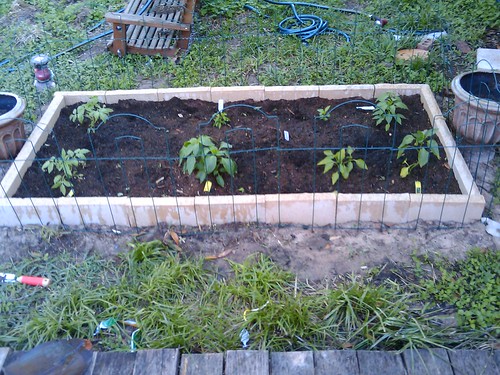
You probably already know the difference between organic and non-organic foods, and have seen your share of the organic type at your supermarket. You may already be aware of which foods come organically. They have special packaging and cost a fortune. Read the helpful tips in the article below to learn more about having your own fresh organic garden.
If you have children, plant strawberries, especially everbearing strawberries, in your organic garden. Children are thrilled to harvest fruit from their own garden, and doing so often makes them more enthusiastic about helping out with the more hum-drum aspects of tending a garden.
Allow your children to actively participate in planting your organic garden. Gardening helps your children learn about biological processes and serves as a social activity that helps the family grow closer while eating healthier.
One way to encourage an organic garden to be sustainable and healthy is to put aside a section to stay undeveloped, thus encouraging wildlife to approach it. Most likely, you will find your organic garden producing better once your property is home to the insects, birds, and other wildlife that plants rely on for pollination and the production and dispersal of seeds.
Organic Garden
If you want to start a small organic garden indoors, evaluate the amount of natural light that is present. If the garden will receive little sunlight, find plants that can grow in medium or low-light environments. Using UV lamps is a great way to grow an organic garden anywhere.
When growing plants inside of the house, you should ensure the thermostat is set at around 65-75 degrees in the daytime. Plants require a warmer climate to grow. Another option is the use heat lamps that will protect your organic plants.
Pine needles make a great organic mulch. Some plants are more acidic, and prefer soil that contains higher acidic levels. If you have these plants in your garden, keep them healthy by using pine needles as mulch. If you spread a few inches of pine needles around your garden beds, when they break down, the acid they contain will leach into the soil.
When developing your compost pile, use equal measures of dried and green material. Green plant material consists of spent flowers, veggie and fruit waste, leaves, weeds, and grass clippings. Dried plant materials are things like shredded newspaper, cardboard, sawdust, straw, and any cut up wood materials. Diseased plants, meat and fire-waste like charcoal or ashes should not be placed in your compost pile.
Growing your garden at home might not be the most convenient thing for you, but you will save a lot of money and always have the confidence that what you’re eating and feeding your family is as fresh and as healthy as possible. Use the tips you’ve learned here and get started on your garden today.
Before planting any perennials, you have to make the ground ready. Simple slice into the soil with a spade, flip the turf, and mulch the area with 3 to 4 inches of wood chips. Let the area sit for a couple weeks, then begin digging into it and planting your new perennials.
Get it straight from Wikipedia Clayton NC on Wikipedia


Recent Comments